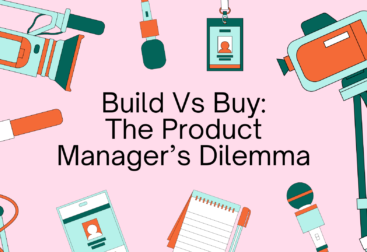In today’s fast-paced business world, it’s easy to fall prey to the latest trends, technologies, or ideas that promise a shortcut to success. This is especially true for entrepreneurs, product managers, and decision-makers who are always on the lookout for the next big thing. This phenomenon, known as Shiny Object Syndrome (SOS), can hinder progress, sap resources, and keep you from achieving long-term success.
What is Shiny Object Syndrome?
Shiny Object Syndrome is the tendency to chase after the newest trends, technologies, or ideas with the belief that they will instantly solve your problems or improve your business. While innovation is crucial for growth, constantly switching focus to something new can leave projects incomplete, waste resources, and prevent you from mastering any one thing.
For startups and businesses, it often manifests in adopting every new tool, attending endless conferences, or switching strategies mid-execution. As exciting as these shiny objects seem, they rarely lead to sustained growth. In fact, they often derail progress by distracting you from what truly matters—executing your core vision and strategy.
Why Entrepreneurs and Product Managers Fall Into the Trap
In product management and entrepreneurship, success often depends on making strategic decisions quickly. However, this need for agility can also be a double-edged sword. The fast-moving nature of the industry encourages quick pivots, and it’s easy to justify chasing every new idea as “staying ahead of the competition.” However, this approach can spread resources thin and lead to burnout, especially if every shiny object pulls your team in a different direction.
Here’s why Shiny Object Syndrome is so prevalent:
- Fear of Missing Out (FOMO): No one wants to miss the next big thing, especially when it could give you an edge over competitors. The fear of being left behind is a powerful driver.
- Overconfidence in New Solutions: New technologies or tools often come with promises of solving complex problems instantly. This can create an illusion of a quick win, pushing you to jump ship from your current projects.
- Innovation Pressure: In the startup world, innovation is king. Entrepreneurs often feel they need to adopt the latest technology or trend to prove they are on the cutting edge.
- The Appeal of Starting Something New: It’s human nature to get excited about the new and unfamiliar. Starting a new project gives you a dopamine rush, but this often fades, leaving incomplete work in its wake.
The Dangers of Shiny Object Syndrome
While staying current is important, constantly shifting focus comes with significant downsides. Here’s why giving in to Shiny Object Syndrome can be detrimental:
- Loss of Focus
One of the most damaging effects of SOS is the loss of focus. Jumping between ideas or projects can leave your team scattered and inefficient. When you’re constantly chasing the next big thing, you never give your primary goals the attention they need to flourish. - Wasted Resources
Every time you pivot to a new shiny object, you’re pouring time, money, and manpower into something that might not yield results. This can drain your budget and demoralize your team, especially if it means abandoning ongoing projects. - Missed Opportunities for Mastery
Success often requires mastery, which comes from sticking with something long enough to learn from your mistakes and optimize your approach. Shiny Object Syndrome disrupts this process, as it doesn’t allow you to see projects through to completion or learn from them. - Burnout
Shiny objects are often short-term solutions or distractions, which can lead to constantly chasing your tail. This cycle of excitement and abandonment leaves you and your team feeling frustrated and burned out, decreasing morale and productivity. - Erosion of Credibility
For product managers and leaders, shifting strategies too frequently can erode your credibility with your team, stakeholders, and investors. It creates the perception that you lack direction, which can weaken trust in your leadership.
How to Overcome Shiny Object Syndrome
If you’re struggling with Shiny Object Syndrome, the good news is that it can be managed. Here’s how you can stay focused and avoid being lured by every new trend or idea:
- Clarify Your Long-Term Goals
Before jumping on any new opportunity, take a step back and assess whether it aligns with your long-term objectives. Does this shiny object move you closer to achieving your primary goals, or is it just a distraction? Keeping a clear vision in mind will help you prioritize your actions. - Set Clear Criteria for Decision-Making
Establish a framework for evaluating new opportunities. Develop a set of criteria, such as ROI, alignment with core values, or scalability, that each new idea must meet before you invest time or resources. This will prevent impulsive decisions driven by excitement rather than logic. - Limit Your Focus to 1-2 Priorities at a Time
Focus is a muscle that needs training. To avoid spreading yourself thin, limit your focus to 1-2 key priorities at a time. Stick with these until they are either completed or proven ineffective. This ensures you give your efforts the attention they deserve. - Embrace a Disciplined Mindset
Cultivate discipline by resisting the temptation to constantly switch gears. Remember that mastery and long-term success are often achieved through sustained effort, not by chasing after every new idea. Develop patience, and remind yourself that slow, steady progress often wins the race. - Delegate and Empower Your Team
Product managers and entrepreneurs often fall into the trap of SOS because they feel responsible for every decision. However, learning to delegate and trust your team can reduce your own cognitive load, freeing you up to focus on what truly matters. Empower your team to handle day-to-day tasks so you can maintain strategic focus. - Conduct Regular Reviews
Periodically review your goals, projects, and decisions to ensure you’re on the right path. This allows you to adjust without falling victim to SOS. Regular reviews will also help you spot when shiny objects are creeping into your agenda and refocus your efforts. - Stay Educated, but Don’t Overcommit
Staying up-to-date with industry trends is crucial, but you don’t need to adopt every new tool or strategy that comes along. Educate yourself, but be selective about what you implement. Ask yourself, “Is this worth our time right now?”
How To Excel at Decision-Making and Problem-Solving in a Leadership Position
How to Recognize If You’re Falling Victim to Shiny Object Syndrome
Awareness is key to overcoming SOS. Here are some signs that you might be falling into the trap:
- You frequently abandon projects before they’re completed in favour of starting something new.
- You have a growing list of unfinished ideas or initiatives.
- Your team feels scattered and lacks clear direction.
- You’re always looking for the next tool or trend to solve your problems.
- You’ve lost sight of your long-term vision and are chasing short-term wins.
Case Study: Overcoming Shiny Object Syndrome at Got It Delivery
As someone who has worked with multiple startups, including Got It Delivery, I’ve seen first-hand how Shiny Object Syndrome can infiltrate even the most promising ventures. In the early days, we faced pressure to integrate countless new features, tools, and ideas to outpace competitors. Each new shiny object distracted us from perfecting our core offering: seamless and reliable deliveries.
Recognizing the danger, we narrowed our focus to delivering the best possible user experience through operational efficiency and product simplicity. We stopped chasing new trends and concentrated on scaling the features that worked. As a result, the platform grew to handle 200k orders, achieving sustained growth that chasing trends alone would not have provided.
Conclusion: Staying Focused on What Matters
Shiny Object Syndrome is a common challenge for entrepreneurs and product managers, but it’s one that can be overcome. By clarifying your long-term goals, setting clear decision-making criteria, and embracing discipline, you can resist the lure of distractions and keep your focus on what truly matters—building a sustainable, successful business.
Staying grounded doesn’t mean avoiding innovation; it means being strategic about what you pursue and ensuring that your efforts align with your core vision. Mastering this balance will keep you on track for long-term success, while your competitors get distracted by the next shiny object.












